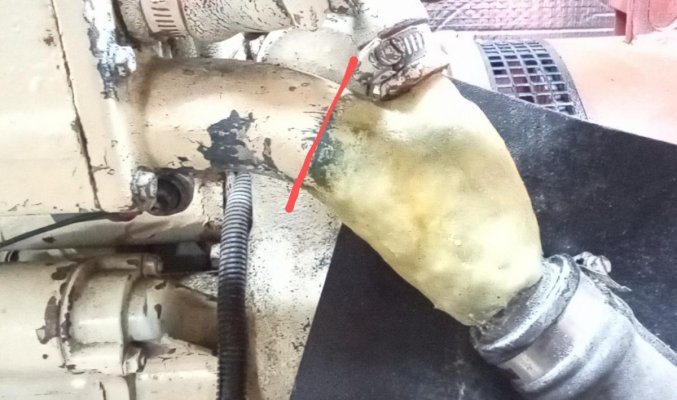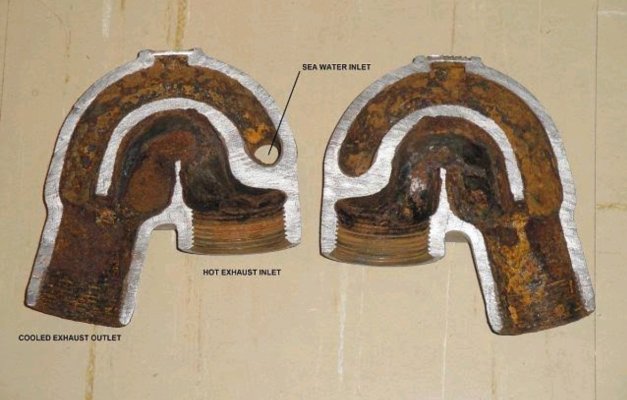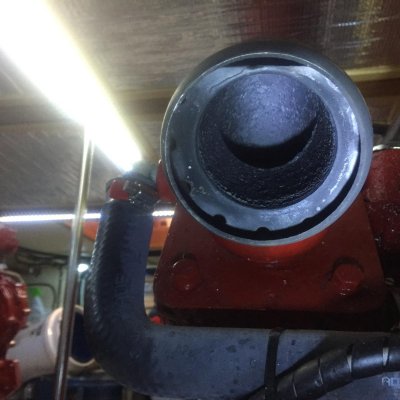Simi 60
Guru
- Joined
- Jul 1, 2016
- Messages
- 5,482
- Location
- Australia
- Vessel Make
- Milkraft 60 converted timber prawn trawler
What is inside these mixing elbows?
I have never cut one down so genuine question.
Is it simply a 2 inch tube with an angled 3/4 inch tube stuck in as a water injection port?
(Made up sizes)
Reason I ask is mine is rotting out on a Kubota based Genset as can be seen.
Cast aluminium elbow bolted to cast aluminium with well frozen in steel bolts.
Water injection port is brass so adjacent to it the ally is failing.
Made to fail.
I was going to wait until next out of the water to get it done but I doubt it'll hold up that long.
It will be a time consuming and expensive job to remove, manufacture and replace if sending it off and as we are living aboard cruising full time we can't simply plug into shore power and get it fixed, well we could but marina berth alone would be $500 for 3 days plus cost of repair.
There is a healthy couple of inches sticking out and I wonder if I can simply cut off the dead bit at the line and mig on a new bit of ally pipe with a smaller ally tube for water injection welded in, all metals are then the same.
For this job I can anchor out, remove cut and prep and run into a waterfront shop and have it migged up in under an hour.
Pic below shows the elbow, epoxy glue with chopped glass fibres is holding up ok, but I ain't holding my breath it's going to last another 6 mths until we come out if the water.
I have never cut one down so genuine question.
Is it simply a 2 inch tube with an angled 3/4 inch tube stuck in as a water injection port?
(Made up sizes)
Reason I ask is mine is rotting out on a Kubota based Genset as can be seen.
Cast aluminium elbow bolted to cast aluminium with well frozen in steel bolts.
Water injection port is brass so adjacent to it the ally is failing.
Made to fail.
I was going to wait until next out of the water to get it done but I doubt it'll hold up that long.
It will be a time consuming and expensive job to remove, manufacture and replace if sending it off and as we are living aboard cruising full time we can't simply plug into shore power and get it fixed, well we could but marina berth alone would be $500 for 3 days plus cost of repair.
There is a healthy couple of inches sticking out and I wonder if I can simply cut off the dead bit at the line and mig on a new bit of ally pipe with a smaller ally tube for water injection welded in, all metals are then the same.
For this job I can anchor out, remove cut and prep and run into a waterfront shop and have it migged up in under an hour.
Pic below shows the elbow, epoxy glue with chopped glass fibres is holding up ok, but I ain't holding my breath it's going to last another 6 mths until we come out if the water.




